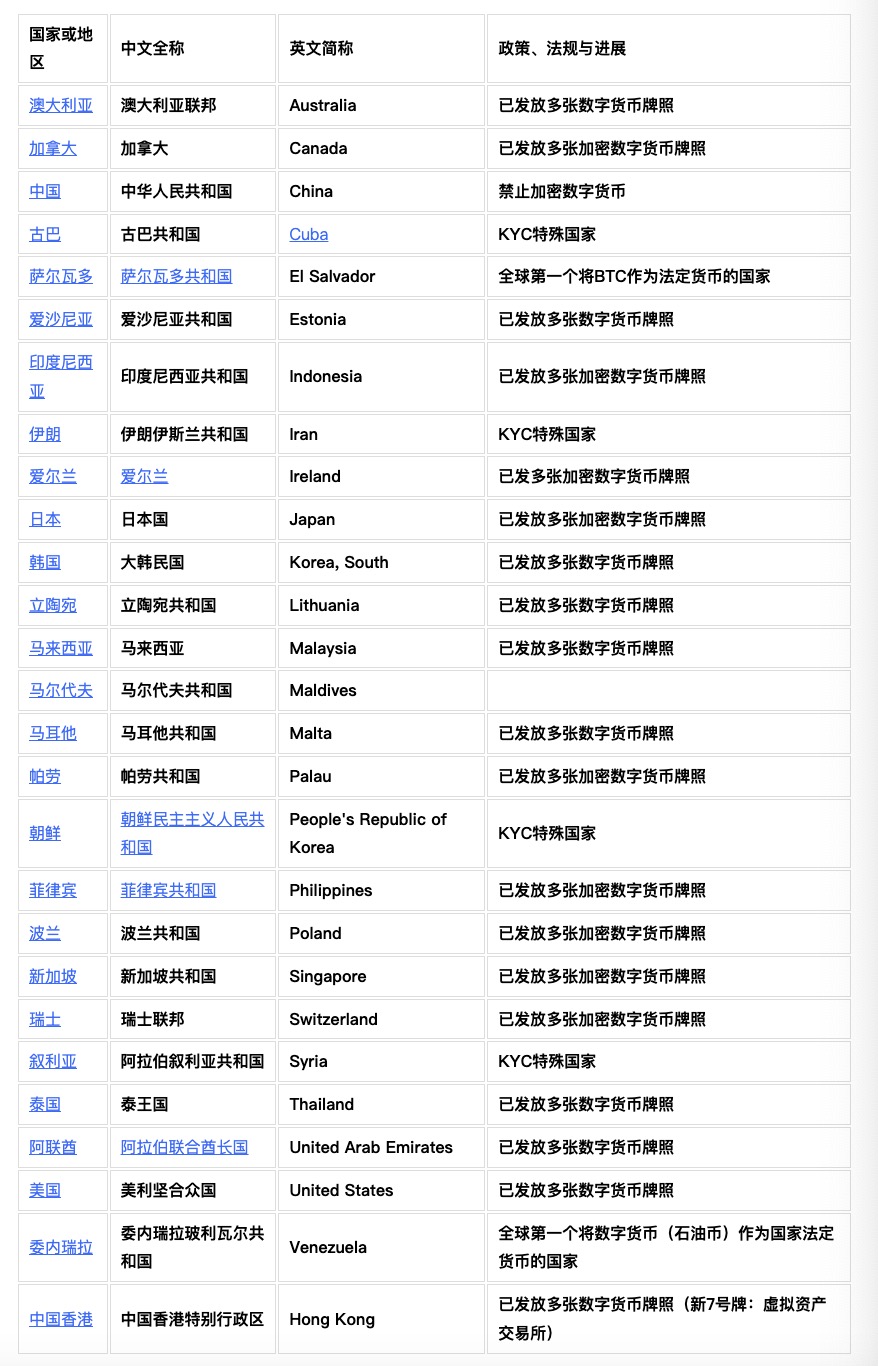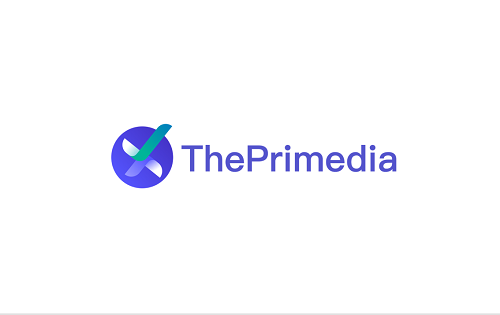写在香港区块链周:Web3.0「国际合规」路径解析
Original source: ThePrimediaDAO
Original author: Hu Changming
Original editor: Jerry@TPDAO
Introduction:
Since Hong Kong’s new encryption policy, a large number of knowledgeable domestic venture capital friends have tried to enter the encryption world through Hong Kong’s compliance market and use this to complete the iteration of their own projects from Web2.0 to Web3.0. Practice has proved that this path is feasible, but there will also be some difficulties. The best idea is to base ourselves in Hong Kong and look at the world. On the occasion of the 2024 Hong Kong Blockchain Week, we sorted out the issues and paths of Web3.0 international compliance to serve domestic Web3.0 practitioners who are trying to integrate into the encryption world through Hong Kong compliance.
1. Overview of Web3.0
Web3.0 is often contrasted with Web2.0 and Web1.0. Web1.0, also known as the static web, was the first iteration of the Internet and consisted of simple static websites that could be accessed using a browser; Web2.0, also known as the interactive web, introduced more complex features such as search Engine and social media allow greater interactivity and online collaboration; Web3.0 is a decentralized network based on blockchain technology and is the next generation of Internet infrastructure.
Web3.0 is built on decentralized technologies such as blockchain, which can improve the security and control of personal data, which means that users can interact with Web3.0 applications more safely and privately, and control Have more control over the information shared on the Internet. Web3.0 envisions a more open and secure Internet that puts users in control of their own data and eliminates the need for central authorities.
The main features of Web3.0 include:
1.1. Decentralization: Web3.0 is built based on blockchain technology. It does not rely on centralized servers. Instead, it is a decentralized network composed of nodes distributed around the world. There is no single point of control, but the network Multiple nodes in the network are jointly maintained and managed, and changes in a single or a small number of nodes will not affect the entire network.
1.2. Non-tampering: Web3.0 is based on the characteristics of decentralization. The decision-making of a single or a small number of nodes cannot tamper with the data of the entire network. Once the information is recorded on the blockchain, it cannot be changed or deleted, ensuring that all data of the entire network is Fair and trustworthy.
1.3. Traceability: All data in Web3.0 is open and transparent to all nodes, and all data is traceable, which promotes the transparency and openness of information and reduces the problem of information asymmetry.
1.4. Smart contracts: Web3.0 smart contracts can realize that code is law, have programmability and interoperability, improve the scalability and flexibility of the system, and enable the system to better cope with future development needs.
1.5. Resistance to censorship: Web3.0 does not rely on the credibility of any intermediary agency or public authority. It eliminates the monopoly and control of users by centralized institutions. It is naturally resistant to censorship and blockade, making information dissemination more efficient. free.
1.6. High security: Web3.0 network is not easy to be attacked or paralyzed because there is no single attack target and no single point of failure risk. Data is distributed on multiple nodes of the network. There is no single point of failure. The system is more stable and reliable.
1.7. Community autonomy: Web3.0 implements community autonomy, has a decentralized autonomous organization (DAO), is open, fair, inclusive, and allows users to have a greater say in the direction of the platform they use, promoting The application scenarios of autonomy, freedom, equality and democracy are conducive to achieving fairer and equal resource distribution and reducing social inequality.
1.8. Data confirmation: Web3.0 users have more privacy rights and data control rights, and data confirmation is truly realized. For example, in online games, through web 3.0, users can own non-fungible tokens, which means that even if they stop playing the game or the game creator deletes their account, they can retain ownership of their in-game items.
1.9. Privacy protection: Web3.0 implements disintermediation identity management, and the account is the identity. This provides a single, secure login across censorship and anonymity platforms, supports the implementation of decentralized identity verification and digital identity, and maximizes protection. protect user privacy.
1.10. Encrypted digital currency: Web3.0 can realize consensus as value, and naturally comes with the attributes of encrypted digital currency, which promotes the development of new finance and reduces transaction costs and intermediary fees.
1.11. Decentralized Applications (DAPP): In the Web3.0 project, currency holders are users, which is a reconstruction of the traditional business model and encourages more innovation and experimentation because decentralized networks are more flexible. In the Web3.0 ecosystem, anyone can create value and realize benefits by developing smart contracts, building decentralized applications (DAPP), and participating in cryptocurrency transactions. This open and inclusive innovation environment helps stimulate more innovation vitality and promote the continuous evolution of technology and business models.
1.12. Globalization: Web3.0 naturally has the attributes of globalization, breaks geographical restrictions, allows people to conduct cross-border transactions and cooperation more freely, promotes globalization and international cooperation, and provides economic development for different countries and regions. Got the chance. Web3.0 provides a more open and transparent market mechanism, supports a more open and easy network participation mechanism, lowers the entry threshold, promotes competition and innovation, provides a broader stage for innovators, and attracts more people. Talent and project participants.
2. Analysis of major compliance issues in Web3.0
Because of the uniqueness of Web3.0, which may involve many national authorities requiring supervision, it is very important to ensure the compliance of Web3.0 projects.
Web3.0 compliance issues mainly include:
2.1. Compliance with laws and regulations: Web3.0 projects should comply with local laws and regulations, including but not limited to company laws, data privacy laws, digital asset laws, etc. The compliance team should work with local professional legal counsel to ensure that the project is legal and compliant. If the project involves cross-border business, the laws and regulations of different countries and regions need to be considered to ensure that the project is legal and compliant globally.
2.2. KYC/AML compliance: Web3.0 projects should take KYC (Know Your Customer) and AML (Anti-Money Laundering) measures to prevent triggering local money laundering, terrorist financing and other illegal activities. These measures may include real-name verification, identity verification, transaction monitoring, etc.
2.3. Data security compliance: Web3.0 projects should take measures to protect the security of user data, comply with local data protection laws and regulations, and promptly disclose security incidents such as data leaks.
2.4. Privacy protection and compliance: Web3.0 projects should pay attention to user data privacy protection, comply with local data privacy regulations, and take measures to protect users personal data from being abused or leaked.
2.5. Technical security compliance: Smart contracts play an important role in Web3.0, so their compliance and security must be ensured. Web3.0 projects should review smart contract code to ensure that it complies with local laws and regulations and does not contain any vulnerabilities or security risks.
2.6. Financial regulatory compliance: Web3.0 projects involving encrypted digital currencies and digital asset transactions need to comply with relevant local financial regulatory regulations, including but not limited to securities laws, currency laws, payment laws, etc.
2.7. Community governance compliance: The community governance mechanism of Web3.0 projects should be compliant, comply with community norms and local laws and regulations, and ensure the safety and stability of community operations.
2.8. Social media and advertising compliance: When Web3.0 projects promote projects on social media, they must comply with local social media policies and regulations to prevent false propaganda, rumor-mongering and other violations. When conducting advertising, advertising regulations must be followed to ensure that the advertising content is true, legal, and compliant.
2. 9. Audit compliance: Web3.0 projects should conduct regular compliance audits to ensure the projects compliance with local laws, finance and technology, and promptly adjust and improve compliance measures.
2.10. Compliance reporting and disclosure: Web3.0 projects should regularly submit compliance reports to local regulatory agencies and publicly disclose information such as project operations and financial status to ensure transparency and compliance.
3. Web3.0 project compliance solutions
If the Web3.0 project involves encrypted digital currency, it may involve compliance at the regulatory level of financial projects. To achieve global compliance for Web3.0 projects, compliance needs to be based on the following principles:
First of all, in some special countries and regions, such as North Korea, Cuba, Iran, Syria, etc., strict KYC review systems are implemented. Customers in such regions will not conduct business before obtaining a local cryptocurrency license or Web3.0 license. business.
Secondly, in all countries and regions around the world that have officially formulated relevant encrypted digital currency or Web3.0 laws and policies, such as Australia/Canada/Estonia/Indonesia/Japan/South Korea/Lithuania/Malaysia/Malta/Pala/Philippines/Poland/ Singapore/Switzerland/Thailand/UAE/United States/Hong Kong, China, etc., implement strict KYC review systems. Customers in such areas must obtain a license issued by the locality allowing encrypted digital currency or Web3.0 business before they can officially Conduct business. You can directly apply for a local compliance license, or acquire an existing local compliance license, invest in an existing local compliance license, borrow an existing local compliance license as a business channel, etc.
Third, in all countries and regions around the world that have not formally formulated relevant encrypted digital currency or Web3.0 laws and policies, strict KYC review systems are implemented, and customers in such regions can conduct business normally. For example, in areas with relatively liberal legal policies such as Cayman, BVI, and Bermuda, business licenses should be registered normally and the business scope should be as wide as possible, including Internet technology development and promotion, Blockchain technology development and promotion, and Artificial Intelligence. Technology development and promotion, Venture investment, Investment consulting, etc.
The specific compliance measures are as follows:
3.1. KYC/AML and cross-border transaction compliance
KYC (Know Your Customer) and AML (Anti-Money Laundering) requirements in the traditional financial system are often difficult to achieve for decentralized networks. Due to the anonymity and decentralization of the Web3.0 environment, it is difficult to effectively verify the identities of transaction participants, making it difficult to meet KYC/AML requirements, resulting in difficulties in transaction supervision. Transactions in a Web3.0 environment may be more anonymous and decentralized, but laws in many countries and regions require identity verification and KYC/AML checks. Therefore, corresponding solutions need to be developed to meet these requirements. The global nature of Web3.0 has led to an increase in cross-border transactions, but the laws and regulations of different countries and regions vary greatly, making cross-border transaction compliance more complex. Especially cross-border transactions involving cryptocurrencies, due to their anonymity and untraceability, are often easy channels for money laundering and terrorism funding. Since Web3.0 is a global network that involves many cross-border transactions and cooperation, it is necessary to consider the laws and regulations of different countries and regions and ensure that applicable legal standards are followed in cross-border transactions. Solutions include:
Develop a decentralized identity verification system to ensure the authenticity of the identities of transaction participants; integrate KYC/AML checking processes into blockchain transactions to ensure transactions comply with legal requirements; work with legal experts to ensure transactions and contracts comply with cross-border meet cross-border legal requirements; develop cross-border transaction compliance solutions to ensure legality and validity across different jurisdictions.
3.2. Data security and privacy protection compliance
In the Web3.0 environment, personal data privacy protection still faces challenges. The traditional data privacy legal framework usually relies on centralized data management institutions, but in the decentralized Web3.0 environment, data transmission and storage are more decentralized, and the storage and transmission of personal data are more dispersed and anonymous. Therefore, data privacy and security need to be ensured. When designing and implementing Web 3.0 applications, data privacy laws and regulations must be taken into consideration and appropriate measures must be taken to protect user data.
Solutions include: developing encryption and privacy protection technologies to ensure the security and privacy of user data; working with data protection experts to ensure applications comply with applicable data privacy regulations.
3.3. Technical safety compliance
Web3.0 technology is a new Internet technology built on blockchain and cryptocurrency that enables decentralized applications (DApps) to be created, deployed and run. As it involves digital assets and decentralized exchanges, security and compliance become crucial considerations. Solutions include:
Encryption and Key Management: Protecting private keys is very important because they control a user’s assets on the blockchain. Use a secure hardware wallet or a multi-signature scheme to protect private keys. Also, make sure to use encryption when transmitting data.
Smart contract security: Smart contracts are a core component of Web3.0 technology, so their security must be ensured. Conduct adequate security audits and follow best practices, such as simplifying contracts as much as possible, avoiding re-entrancy attacks, ensuring correct permissions, etc.
Security education and training: Security training and education for developers and users is critical. Make sure they understand common security threats and precautions, as well as what to do if they encounter a security issue.
3.4. Financial regulatory compliance
Web3.0 platforms may involve issuing cryptocurrency tokens (Tokens) or conducting decentralized finance (DeFi) transactions, which involves compliance issues with securities laws. According to the securities laws of different countries or regions, Tokens that meet the definition of securities need to be registered, reported, and regulated. A compliant Web3.0 platform should comply with the local securities laws and regulations of the securities regulatory authorities to ensure that its business complies with relevant legal requirements.
Solutions include: applying for a compliant securities license; and compliantly registering in your location.
3.5. Community governance compliance
Web3.0 communities usually exist in the form of decentralized autonomous organizations, so appropriate governance mechanisms need to be developed to ensure that community operations and decision-making comply with laws and regulations.
Solutions include: designing a community governance model that complies with legal requirements to ensure the legality and effectiveness of community decisions; working with legal experts to review the community governance model to ensure it complies with applicable legal standards.
3.6. Social media and advertising compliance
Due to the special nature of Web 3.0, involving cryptocurrencies and decentralized applications, there are some specific compliance issues that need to be considered.
Solutions include:
Transparency and Authenticity: Ensure full transparency is provided in advertising and social media content, including information related to cryptocurrency projects or blockchain projects. Avoid false or misleading advertising, including inaccurate pricing, unsubstantiated claims and exaggerated claims.
Risk Disclosure: Appropriate risk disclosures must be included in advertising and social media promotions, particularly where investment advice or financial products are involved. Clearly communicate investment risks to users and remind them to conduct full investigation and understanding before investing.
Prevent fraud and scams: Take steps to prevent fraud and scams from spreading on social media and advertising platforms. This may include reviewing advertising content, establishing reporting mechanisms, strengthening identity verification, etc.
3.7. Audit compliance and compliance report disclosure
In the field of Web3.0, audit compliance is an important part of ensuring project security and transparency. Solutions include:
Smart contract audit: Smart contracts are the core component of Web3.0 technology and need to undergo strict auditing to ensure their security and functionality. Compliance audits typically include inspections of code quality, security vulnerabilities, functional consistency, and compliance. Ensure auditors have in-depth blockchain and smart contract development experience and strictly follow best practices and security standards.
Data Privacy Audit: For Web 3.0 projects involving the processing of user data, a data privacy audit must be conducted to ensure compliance with applicable data privacy regulations. Audits include inspections of data collection, storage, processing and sharing to ensure that user data is adequately protected and handled compliantly.
Compliance reports and certifications: After an audit is completed, compliance reports and certifications are typically generated to demonstrate to stakeholders that the project complies with relevant regulations and standards. Reports should include audit findings, issue fixes, compliance assessments, and recommended improvements to provide transparency and trust.
Continuous monitoring and updating: Once the audit is completed, the project team should establish an ongoing monitoring mechanism and regularly update the audit content to adapt to changing regulations and security threats. This includes regularly re-auditing the program to ensure it continues to comply with the latest compliance requirements and best practices.
Compliance reporting and disclosure: After completing the compliance report, Web3.0 projects should regularly submit compliance reports to local regulatory agencies and publicly disclose information such as project operations and financial status to ensure transparency and compliance.
Attachment: Countries and regions around the world that have formally formulated laws and policies related to cryptocurrency or Web3.0

Note: This article was co-researched and co-created by ThePrimediaDAO. The co-research and co-creation collaborators include TPDAO initiator Jerry and TPDAO builder, and Digital Asset Investment Co., Ltd. (BVI) Hu Changming; friends who are interested in participating in TPDAO build can contact the person in charge of the operation association fredo (X: @jonesenjiang) communicates.



